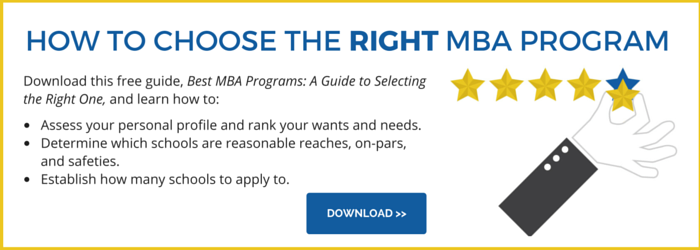
School marketing materials/presentations/websites superficially sound very much the same. So how can applicants wisely research their options and discern the points of difference?
When doing MBA research, pay special attention to the following differentiating features:
- Employment Profile
See where graduates find jobs. Which schools send the most grads to the companies, industries, and locations you are most interested in?
- Class Profile
Do you want a large class or a small, close-knit class? Do you want an urban or rural setting? Do you really want to be in a class that draws over 70% of its students from engineering, business, and technical fields? Or would you prefer to be in a class where 48% come from the social sciences and humanities? Both MIT and Stanford provide outstanding MBA educations, but their classes have very different educational backgrounds. You may prefer one or the other.
- Curriculum
Would you cringe at Harvard’s rigid first year where everyone takes the same classes? Or would you be lost with all the options at Chicago, which prides itself on its flexibility? Is the ability to pass out of prerequisites important to you? Do you want a lot of teacher cooperation and integration of business functions such as is provided by Tuck or Yale.
- Methodology
Do you prefer a mix of methodologies? If so, check out Wharton. Do you seek an emphasis on projects and hands-on learning as at Ross? Do you want the strict case method? Take a closer look at HBS and Darden.
- Clubs & Extracurriculars
There are many schools out there that have imitated MIT Sloan’s business plan competition, but not all programs have a social enterprise competition (HBS does). If you are interested in social enterprise, that competition may be particularly appealing. What are some of the unusual clubs at the different schools that you might be interested in? For example, almost every school will have a Marketing Club, but only some, like Columbia, will have a Luxury Goods Marketing Club. Again, if this is your interest, the existence and health of that club may be an important attraction for you.
- Professor Research
If there is a professor or two researching the niche appealing to you, they may be the magnet pulling you to that program. Are there independent study opportunities? Do they teach MBA students? What classes?
- Fit
Then there is that almost indefinable quality called “fit.” Visit the schools you are considering to determine fit. If visiting isn’t feasible, talk to current students, read MBA student blogs and interviews, and follow the student body newsletters.
Understanding the differences among business schools isn’t easy, but it is worthwhile. Grasping these points of difference will enable you to make more intelligent application and acceptance decisions.
Do you need help distinguishing between the different programs and determining which ones are best for you? Explore our MBA Admissions Consulting & Editing Services and work one-on-one with an expert advisor who will help you choose the best-matched MBA programs for you and apply successfully to acceptance. Learn more here.
Related Resources:
• Accepted's MBA Selectivity Index, a tool to help you discover the schools where you are most competitive
• How Many Business Schools Should You Apply To?
• 5 Factors to Consider When Assessing Your MBA Profile
This article originally appeared on blog.accepted.com.
Applying to a top b-school? The talented folks at Accepted have helped hundreds of applicants get accepted to their dream programs. Whether you are figuring out where to apply, writing your application essays, or prepping for your interviews, we are just a call (or click) away.
Contact us, and get matched up with the consultant who will help you get accepted!


